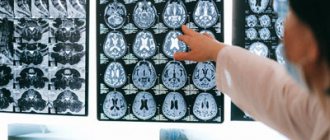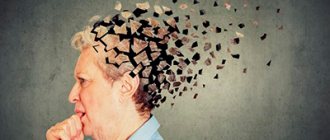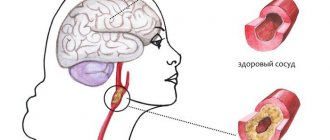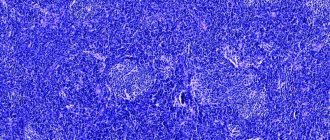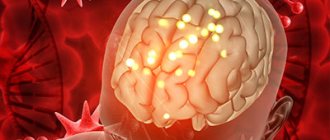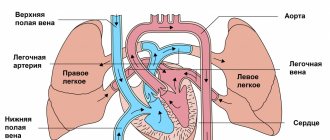What it is
What does a diagnosis of REP mean? The meaning of this abbreviation is residual encephalopathy. The disease is characterized by the death of neurons and impaired brain function. The word "residual" means "residual."
This pathology is always secondary. It occurs as a residual phenomenon after suffering diseases of the central nervous system. This complication occurs when brain diseases are insufficiently or incorrectly treated.
Parents of children are often interested in what a diagnosis of REP in a child means. The decoding of this medical abbreviation is similar, it is residual encephalopathy. With adverse effects on the embryo or birth injuries, perinatal encephalopathy occurs. This disease is diagnosed in children in the first weeks and months of life. If the treatment of such a pathology was carried out poorly, then REP may develop in the future as a residual phenomenon. Often this complication does not appear immediately, but after several months or even years, and it can be difficult to diagnose.
Features of children diagnosed with “residual encephalopathy of the brain”
Elena Savosina
Features of children diagnosed with “residual encephalopathy of the brain”
Residual encephalopathy (hereinafter referred to as REP)
of the brain is a pathology that develops due to the death of cells in the human central nervous system due to exposure to various damaging factors.
With REP, children suffer from chronic energy deficiency. The work cycles of their brain are reduced to 5-15 minutes, and relaxation pauses increase to 3-5 minutes or more. During periods of relaxation, the child’s “external” activity is not interrupted, but occurs automatically and is not consciously realized. At this time, the child does not perceive what is being said to him, although he seems to be listening attentively. If in a state of “relaxation” the child continues to write (as is usually the case in Russian language lessons), then the result of his work is classified as dysgraphia, since it is impossible to read what is written.
During relaxation breaks, children can continue to communicate and talk, but are unable to remember their statements. They can say something rude and be completely confident that they didn’t say anything like that. A child can take a pen from a neighbor’s table, put it in his pocket and not know that it is there. He may push or hit someone and not remember it. Listening to accusations against them, children with REP quite sincerely swear that they did not speak, did not take, did not push, and this causes even greater indignation among others. Since there are many witnesses to their misdeeds , they are often considered arrogant liars, hooligans and thieves. Children, on the contrary, come to the conclusion that those around them are unfair to them; it begins to seem to them that the whole world has turned against them.
Problems of self-government arise in a child with REP not only during periods of brain , but also when performing any activity in the working phase. The child acts immediately, impulsively and thoughtlessly. Therefore, the results of his actions are completely unexpected for him. The student first acts and only then understands what he has done. He tries to improve, but cannot keep his promises.
At a time when the brain “turns off” and “rests,” the child ceases to understand, comprehend and consciously process incoming information. It is not fixed anywhere and does not linger, so the child does not remember what he was doing at that time, does not notice, does not realize that there were any breaks in his work.
During a 40-minute lesson, he can “switch off” several times and let out a lot from the teacher’s story without noticing it. As a result, he either ceases to understand what is being discussed in the lesson, or in his head all this fragmentary information is randomly and uniquely combined, added together, which is what he takes away from the lesson. Often teachers and parents are puzzled by the absolutely incomprehensible, “wild” mistakes of children and are unable to find any reasonable explanation for them.
Recommendations for teachers teaching children diagnosed with REP of the brain :
1. During the learning process, it is necessary to free children from any secondary, auxiliary, non-essential, design work. Adults can mark the margins in the child’s notebook themselves and mark with a dot the place where they should start writing. It happens that a child diligently counts the cells that need to be moved from above and to the left, and in this search, making mistakes many times, he becomes so tired from the tension that, having finally found the place from which to write, he can no longer work at all.
2. Both general principles and specific methods proposed by Glen Doman are extremely effective. His approach is based on a clear structuring of the information that the child has to learn, dividing it into specific figurative units, with their subsequent organization into integral systems according to the laws that operate in the relevant field of knowledge. The unit of information must necessarily be a holistic, independent “image-fact” that is understandable to the child, can be comprehended by him and can be easily included in the system of his personal experience.
3. The systematic presentation of information creates a systematically organized memory, facilitates the search for necessary information, and develops thinking. This means that the load on attention and systematization of material when memorizing is significantly reduced. The form of information presentation should also be algorithmic and clear. Conciseness of wording, design, and illustrations must be observed, which should not contain anything superfluous, insignificant, or distracting.
4. Avoid situations that cause negative emotions. Negative emotions that arise when a child is unable to remember what is required force him to avoid “learning” situations. He no longer wants to listen or watch, so that later he does not have to suffer when answering questions. By requiring the exact reproduction of all information, we put the child in a situation of failure in advance and thereby destroy learning motivation. Naturally, strong negative emotions reduce the ability to learn in any person, especially in a child with REP of the brain . Therefore, it is naive to expect that he will perceive or understand anything better after he has been thoroughly scolded.
5. The classroom environment should be free and relaxed. You cannot demand the impossible from children : self-control and discipline are extremely difficult for a child with EBD. The child's sincere attempts to maintain discipline (sit correctly, not fidget, not talk, etc.)
and worries about the fact that this is not working out in any way lead even faster to overwork and loss
of performance . When attention is not focused on discipline, and lessons are conducted in a playful way, children behave calmer and work more productively. By allowing minor disciplinary violations, overall good performance .
6. If the teacher sees that the child has “switched off” and is sitting with a vacant gaze, then at this moment there is no need to touch him: the child will still not be able to respond rationally.
7. When conducting game lessons, you need to remember that strong and vivid emotional impressions can disorganize the activity of a student diagnosed with REP of the brain . Vivid emotions create something like hotbeds of excitement and can disrupt both subsequent activities and the results of previous ones.
Traditionally used methods of emotional inclusion in the lesson are also not suitable for children with REP of the brain Usually, in order for children to tune in, at the very beginning of the lesson it is proposed to tell them something interesting, although it has little to do with its essence.
One of the obstacles in the learning and intellectual development of children with REP of the brain is a peculiar protective form of activity that develops quite quickly in them. It is expressed in the fact that children try to do at least something (no matter what, even if they do not understand what and how to do. It is as a result of such protective activity that some absurd information, operations, i.e., get stuck in the student’s memory “information noise,” which further disorganizes their thinking and complicates learning.
Psychological and pedagogical support for children with EBD shows that even without treatment, as they grow older, there is always some normalization of brain .
Even if attentiveness does not improve, the obvious “cyclicality” of intellectual activity is smoothed out, and “blackouts” occur less often. By the 5th-6th grade, children already feel the moment when “thoughts begin to run wild” and it becomes difficult to concentrate. They are distracted, rest and continue working when this condition passes. The total time during which they can study productively increases significantly.
Causes
The diagnosis of REP is usually made to patients if they show signs of brain disorders after suffering pathologies of the central nervous system and other diseases that adversely affect the state of neurons. Residual encephalopathy most often occurs due to the following diseases and conditions:
- Severe head injuries accompanied by concussion or skull fractures.
- Congenital perinatal encephalopathy. This condition develops after birth injuries and a pathological course of pregnancy in the mother of the child.
- Inflammatory diseases of the brain.
- Excess urea in the body. This deviation is often observed in diseases of the liver and kidneys.
- Stroke and other cerebrovascular accidents. The cause of the pathology can also be vascular atherosclerosis.
- Diabetes mellitus. Endocrine disorders and excess glucose in the body adversely affect the condition of the nervous tissue.
- Toxin poisoning. Heavy metal compounds, certain medications, and alcohol have an adverse effect on the brain.
- Use of narcotic and psychotropic drugs. Even with timely detoxification, patients often retain signs of brain pathology.
Often the causes of this type of encephalopathy are several unfavorable factors. The physician must take a thorough history of the patient before diagnosing REP. This disease can develop after a fairly long period of time after suffering pathologies.
Treatment of pyramidal insufficiency in children
In the case of real pyramidal insufficiency, medical measures are aimed at treating the underlying disease that caused this insufficiency, including surgical intervention. However, in most cases, apart from hypertonicity of the lower leg, no other symptoms are detected. In this case, the main treatment is to relieve hypertonicity and form the correct position of the ankle joint.
- Massage and exercise therapy. It is important to combine visits to an experienced specialist who can relax and strengthen muscles with light massages at home. Swimming and light physical exercise also contribute to the proper development of muscles and joints, and the formation of good coordination of movements. To restore energy metabolism and the proper flow of fluids in the body, you can contact an osteopath.
- Orthopedic shoes. If pyramidal insufficiency is discovered at an age when the child has already begun to walk, it is important to correctly form the ankle joint, since its incorrect position will lead not only to injuries to the ankle, but also to disruption of the entire musculoskeletal system.
- Vitamin therapy.
- Sometimes medications are prescribed to improve metabolic processes and nerve conduction.
Childhood lays the foundation for health for the rest of your life. It is very important to respond to any deviations from the norm in a timely manner so as not to miss a serious illness that can significantly reduce a person’s quality of life. If you suspect any pathology or you just want to know that everything is fine with your child, contact our Aximed neurology clinic. Our doctors are qualified specialists with many years of experience; the clinic is equipped with the most modern equipment and has the latest diagnostic tools. With us you will receive a comprehensive diagnosis and comprehensive consultation from the best neurologists in Kyiv.
Symptoms
Residual encephalopathy in an adult patient is accompanied by the following symptoms:
- Sudden memory loss. The patient becomes forgetful. He may have difficulty remembering even recent events.
- Decrease in intelligence. The patient's thinking process is disrupted due to the death of neurons and impaired cerebral circulation.
- Emotional lability. The patient's mood often changes, and there is increased irritability and tearfulness.
- Sleep disorders. Patients suffer from insomnia at night, and during the day they feel drowsiness and lethargy.
- Convulsive seizures. Seizures become more frequent as the disease progresses.
- Speech, vision and hearing disorders. The patient slurs his words. Vision and hearing deteriorate due to the death of nerve cells.
- Impaired coordination of movements. The patient's gait becomes unsteady, and he often loses his balance.
- Asthenia. The patient complains of constant fatigue and high fatigue.
- Headache. Migraine-like attacks occur. In this case, the pain syndrome is not relieved by analgesics.
These manifestations of pathology increase as the disease progresses. The more neurons die, the more severe the impairment of brain function.
What signs indicate a diagnosis of REP in a child? This disease can sometimes be difficult to identify in young children. After all, the baby cannot complain about feeling unwell. Parents should be alert to the following manifestations:
- tearfulness;
- increased reaction to external stimuli;
- frequent nausea and vomiting;
- weak sucking reflex;
- increased muscle tension;
- arrhythmia;
- exophthalmos (bulging eyes).
In older children, the disease is accompanied by the same symptoms as in adults. Residual encephalopathy has an extremely negative effect on the child’s intelligence. Children lag behind in mental and physical development, experience difficulties in assimilation and memorization of information, and it becomes difficult for them to study. Often, sick children experience sudden fainting.
Symptoms of ZPRR
It is possible to diagnose a disorder of psychospeech development as early as 2-3 years of age, while an accurate diagnosis is made at 3-5 years, when the disorders are most evident. Such age norms are related to the fact that by this age the absence of inner speech begins to affect the child’s mental development and the development of thinking and understanding of abstract concepts.
Until two years of age, doctors primarily pay attention to motor development (gross and fine motor skills) and speech development. If the pace lags, the following diagnoses are possible: mental retardation, delayed motor development.
And in the presence of such symptoms as a narrow range of emotional manifestations, fatigue, aggressiveness, etc., doctors can detect PVD syndrome from the age of 2 years. From this same age, an accurate diagnosis can be made, which causes ZPRD.
In addition to the immediate delay in speech development, children with developmental retardation develop concomitant signs such as hyperactivity, aggressiveness or poor emotional response, as well as difficulties in social contacts associated with both behavioral and speech difficulties. Children do not have time to master the school curriculum not because of mental retardation, but due to decreased performance, memory, attention and some thought processes. Despite the fact that speech inhibition is usually associated with thinking disorders, already at school age the reverse process can become active (when mental and cognitive abnormalities appear due to speech disorders).
The syndrome of PVD with autistic features is often recorded, which implies not only problems with speech, but also the following behavioral characteristics:
- the child does not make emotional contact, does not smile, and almost never reaches out to parents and peers;
- there is stereotypical behavior (walking in a circle, rocking in one place, a tendency to sort objects);
- negative reaction to any changes, be it the environment, clothing or usual route;
- using toys and objects according to one’s own logic; attachment to one toy is possible.
- sensory processing disorders;
- increased general and autonomic excitability with sleep disturbances, appetite, and gastrointestinal disorders;
- psychomotor excitability, tics, stuttering;
- protest forms of behavior.
In such situations, it is recommended not only drug treatment of the main pathology, but also psychological adaptation in society. Psychological and pedagogical correction (speech pathologist, speech therapist, psychologist, neuropsychologist) and neurological treatment are required.
Complications
How dangerous is a neurologist's diagnosis of REP? Without treatment, this type of encephalopathy can lead to the development of the following complications:
- severe dementia in adult patients;
- mental retardation in children;
- dropsy of the brain;
- neurocirculatory dystonia;
- paralysis;
- Parkinson's disease;
- epilepsy.
The likelihood of complications increases if the patient seeks help too late, when a significant number of nerve cells have died.
Pediatric neurologists often talk about minimal brain dysfunction when diagnosing REP. What does this mean? This complication is expressed in mental disorders in young patients. The child becomes restless, hyperactive, excitable, and often makes erratic movements. These manifestations intensify during puberty against the background of hormonal changes in the body.
Diagnosis of pyramidal insufficiency
First of all, an examination is carried out by a pediatric neurologist, who conducts various tests for age-related reflexes. Very effective and indicative diagnostic tools are tomography and electroencephalography. In cases where a child not only experiences convulsive muscle twitching, but also a fever, lethargy, etc., a spinal cord puncture may be prescribed to identify the underlying disease that requires urgent treatment (for example, meningitis).
Diagnostics
Before diagnosing REP, the doctor questions the patient and examines his medical record. It is necessary to identify all neurological pathologies that the patient suffered in the past. Additional research methods are also prescribed:
- electroencephalogram;
- MRI and CT of the brain;
- clinical and biochemical blood test;
- Dopplerography of cerebral vessels.
Symptoms
Symptoms of residual encephalopathy in children usually appear after a significant period of time from the initial pathology. Infectious or inflammatory diseases, traumatic brain injuries or arterial hypertension can provoke their development.
Features of perinatal residual encephalopathy
Clinically, perinatal EC is manifested by a number of syndromes:
- hydrocephalic-hypertensive;
- epileptic;
- meningeal;
- convulsive;
- psychovegetative;
- focally scattered microsymptoms.
The initial signs of the disease are usually general cerebral symptoms: dizziness, nausea, vomiting and headache - first paroxysmal and then constant. The severity of hypernesia-hydrocephalic syndrome is determined by the degree of increase in intracranial pressure - from mild anxiety and reaction to bright light, to crises accompanied by vomiting without relief, lethargy and complete adynamia.
In more than half of the cases of EC in children, psychovegetative disorders are manifested, manifested by complaints of a neurasthenic nature. Children become irritable, their range of interests narrows, their mood becomes unstable, and their memory deteriorates. With post-traumatic and infectious EC, autonomic lability predominates in the clinic, and with perinatal EC, symptoms of dystrophic disorders, often accompanied by allergic pathology, dominate.
The clinical picture of focal symptoms depends on the location of the brain lesion and is manifested by hearing and vision impairment, cranial nerve paresis, and asymmetry of tendon reflexes.
The most severe consequences of perinatal EC are cerebral palsy and epilepsy.
Clinic of acquired residual encephalopathy
It is characterized by gradual development and depends on the location and severity of cerebral lesions. The most common symptoms of RE include:
- violations of operational and long-term memory;
- psycho-emotional lability, mood instability;
- decreased concentration;
- general weakness, increased fatigue;
- decreased mental performance;
- intense headaches that are difficult to relieve with medications;
- sleep inversion (daytime sleepiness and nighttime insomnia).
An objective examination of the neurological status of patients reveals nystagmus, the appearance of pathological reflexes, positive coordination tests (instability in the Romberg position), hyperreflexia and muscle hypertonicity. In some cases, signs of damage to the cranial nerves are recorded (hearing loss develops, visual acuity decreases, ptosis and gaze paresis are possible).
Neurological symptoms are often accompanied by autonomic disorders. The progression of RE encephalopathy leads to the development of one or more neurological deficit syndromes: parkinsonian, vestibulo-atactic, pseudobulbar, hyperkinetic.
In the later stages of RE, a decrease in intelligence and disorders in the emotional and volitional sphere are possible.
Drug treatment
Treatment of this type of encephalopathy should be comprehensive. To restore normal brain function, patients are prescribed nootropic drugs:
- "Cinnarizine";
- "Piracetam";
- "Cavinton";
- "Noopept";
- "Pantogam"
- "Phenibut";
- "Phenotropil".
These medications improve cerebral circulation and metabolism. It is useful to take them together with B vitamins. This will help restore normal functioning of the central nervous system.
For severe headaches, analgesics usually do not help. Therefore, patients are prescribed non-steroidal anti-inflammatory drugs:
- "Ketanov";
- "Nise";
- "Ibuprofen."
For severe pain, treatment with corticosteroids is recommended: Prednisolone or Dexamethasone.
If a patient experiences frequent epileptic seizures, it is recommended to take anticonvulsants: Finlepsin or medications based on valproic acid.
For increased irritability and mood swings, doctors prescribe mild sedatives: Afobazol, Glycine, Persen. These medications will help reduce emotional instability. In severe cases, antidepressants and tranquilizers are indicated.
Treatment
The doctor selects treatment methods for each child individually. The prescription of therapeutic measures is determined by the reasons that caused RE, the location of the lesion in the brain, the severity of the child’s condition and the clinical manifestations of the disease. A common choice is therapy with drugs from various groups. Medicines prescribed:
- improving blood microcirculation in the brain (Stugeron, Vinpocetine);
- anticonvulsant (antiepileptic) drugs (Carbamazepine, Depakine);
- non-steroidal (non-hormonal) anti-inflammatory drugs (Metamizole, Ibuprofen);
- steroid (hormonal) anti-inflammatory drugs (Dexamethasone, Prednisolone);
- multivitamin complexes (Vitrum baby, Kids formula);
- sedatives (Negrustin, Glycine);
- nootropics (Cortexin for children, Tenoten for children).
Treatment with physiotherapeutic procedures is of great importance. Massage and therapeutic exercises help improve muscle tone and increase blood flow. Exercise therapy helps restore coordination disorders and motor (motor) function of skeletal muscles. Group and individual classes organize children and promote behavior correction.
Other therapies
Drug treatment is supplemented with therapeutic massage sessions. This helps stimulate cerebral circulation. Therapeutic gymnastics is also useful. When performing exercises, you need to pay special attention to the collar area. Active neck movements help improve brain nutrition.
A child suffering from residual encephalopathy needs developmental activities. When correcting mental disorders, it is very important to train memory and attention. In cases of severe developmental delay, home schooling is indicated for school-age children.
How to behave at home with a child suffering from residual encephalopathy?
Parents should organize a daily routine for the child, provide quality nutrition, proper rest, and daily walks. You should talk to children, play intellectual and active games according to their age. If the child refuses to study, the request should be repeated gently but persistently. If you categorically disagree, you cannot put pressure on the child. You should switch his attention to something else or leave him alone for a while. The teenager needs to be explained the harmful effects of smoking and toxic substances on his unhealthy brain.
Forecast
If the diagnosis of REP was made in a timely manner and the patient completed the full course of therapy, then the disease can be cured. Lost neurons can no longer be restored. But if the process of brain cell death has just begun, then therapy will help maintain the normal function of the central nervous system. Therefore, treatment is effective only at the initial stage of the pathology.
In advanced cases, it is no longer possible to restore lost brain functions. Even after treatment, the patient retains signs of memory impairment, thinking disorders and emotional lability. In children, this can lead to severe mental impairment.
REP neurology: what is it, causes of the disease
A neurologist diagnoses REP in cases of disorders of brain function that occur after diseases that provoke damage to nerve cells. The most common causes of REP are:
- mechanical damage to cerebral tissue due to bruises, concussions, bone fractures, intracranial hemorrhages, etc.;
- perinatal encephalopathies resulting from pathologies of intrauterine development or damage to the central nervous system in the first days of life;
- encephalitis of infectious nature;
- autoimmune processes in the central nervous system;
- increased urea content in the blood due to kidney or liver diseases;
- disturbance of cerebral hemodynamics as a result of atherosclerosis, ischemic stroke, embolism, etc.;
- neuronal damage due to diabetes mellitus;
- intoxication, especially in case of poisoning with neurotoxins, salts of heavy metals, ethyl alcohol, psychotropic drugs;
- systematic use of drugs.
Considering that residual encephalopathy can be provoked by several factors at once, when making a diagnosis, the doctor must carefully study the patient’s anamnestic data.
Prevention
How to prevent the occurrence of residual encephalopathy? Prevention of this dangerous disease consists of observing the following measures:
- Injuries and pathologies of the central nervous system must be carefully treated.
- During pregnancy, women need to be under regular supervision by an obstetrician-gynecologist. It is also necessary to avoid any adverse effects on the embryo.
- We must try to prevent traumatic brain injuries in children.
- It is necessary to protect yourself from poisoning with toxic substances, and also stop drinking alcohol.
- Patients who have suffered pathologies of the central nervous system need to be regularly monitored by a neurologist and undergo all necessary examinations.
These recommendations will help avoid the occurrence of residual encephalopathy. It is important to remember that this disease is much easier to prevent than to cure.
Why does pyramidal insufficiency syndrome occur?
The medulla oblongata, whose cells are called “pyramids,” is responsible for complex reflexes in the human body. It is as a result of any disturbances in this part of the brain that the so-called pyramidal insufficiency occurs, i.e., disturbances in the adequacy of reflexes. The most common causes of deficiency are:
- congenital pathologies of the NS,
- birth injuries,
- fetal hypoxia during pregnancy or childbirth,
- disruption of the production or outflow of cerebrospinal fluid (cerebrospinal fluid),
- infectious diseases,
- abscesses,
- inflammation of the meninges that cause hydrocephalus (meningitis, encephalitis),
- tumors
- cerebral hemorrhages.
Pyramidal insufficiency syndrome is by and large not a separate disease. This is a secondary condition caused by an underlying disease of the nervous system. It is worth noting that in infancy (2-3 months), tightening of the legs and hypertonicity of the lower leg muscles is not a terrible pathology. As the nervous system ages and matures, this condition usually goes away.
Symptoms of encephalopathy
Recognizing the onset of encephalopathy is problematic. After all, the condition that precedes its development can be characterized by symptoms that are common to humans and are temporary in nature, such as headache, dizziness, and tinnitus. At first, this may be mistakenly associated with changes in weather, excessive physical or mental stress, or severe stress. But if you do not pay attention to them, you can allow the disease to progress, since even such symptoms can indicate a deterioration in cerebral circulation.
By nature, the symptoms of encephalopathy are very diverse. But its most common signs, with the exception of the above three, are:
- general weakness;
- increased fatigue;
- tearfulness;
- lack of initiative;
- sudden mood changes;
- depression;
- hot temper;
- clouding of consciousness, memory destruction;
- deterioration of vision and hearing functions;
- poor sleep;
- obsessive desire to die.
Encephalopathy of the brain
When visiting a doctor, such patients often have difficulty pronouncing some words, their speech is verbose, their range of interests is narrowed, and there is a desire to sleep during the daytime. These are the common and most common symptoms of encephalopathy. You should also know that each type of disease has its own set of symptoms.
Thus, the development of discirculatory encephalopathy is characterized by 3 stages, characterized by a certain set of signs:
- compensated stage. Here, the appearance of general symptoms is observed, such as dizziness, memory loss, and headaches.
- subcompensated stage. Symptoms are more pronounced and clear:
- constant headache;
- incessant ringing in the ears;
- worsening sleep;
- tearfulness;
- state of depression;
- lethargy;
decompensated stage. The main symptoms of this stage are life-threatening morphological changes in brain tissue.
Progressive vascular leukoencephalopathy can lead to the development of dementia. Symptoms of this encephalopathy:
- headache;
- nausea, vomiting;
- memory impairment;
- dizziness;
- the appearance of phobias;
- psychopathy;
- the occurrence of hallucinations;
- asthenia.
Consequences of alcoholism
Toxic and, above all, alcoholic encephalopathy is dangerous due to the destructive effects of toxic substances on the vessels of the human brain, manifested by the following symptoms:
- long-term, acute psychoneurological personality disorder;
- an increase in the volume of the ventricles of the brain;
- congestion of the meninges with blood;
- cerebral edema.
Post-traumatic encephalopathy is dangerous due to the latent course of symptoms that appear long after the injury:
- behavioral disorders;
- impaired thinking;
- absent-mindedness;
- memory loss.
It should be noted that the severity of these symptoms will be stronger, the more severe and dangerous the injury. Radiation encephalopathy is characterized by 2 types of disorders: asthenic and psychological. Symptoms that characterize progressive multifocal leukoencephalopathy:
- violation of higher brain functions;
- a disorder of consciousness that can lead to dementia;
- epileptic seizures and ataxia are rare.
This leukoencephalopathy is the most “aggressive” of a large number of encephalopathies, its prognosis is disappointing - death.
Symptoms of metabolic encephalopathy:
- confusion;
- absent-mindedness;
- drowsiness;
- lethargy;
- speech disorder;
- the occurrence of hallucinations;
- disturbance of worldview;
- coma - as the disease progresses.
Causes of residual encephalopathy
A number of painful conditions can influence the development of the disease:
- Traumatic brain injury (TBI);
- inflammatory processes in the brain;
- infectious diseases;
- stroke;
- hypertension, especially in combination with vascular atherosclerosis;
- cardiac ischemia;
- vegetative-vascular dystonia with vegetative crises;
- kidney diseases;
- liver diseases;
- systematic intoxication with alcohol and other harmful substances (drugs, poisons, potent drugs in excessive doses); Drug addicts and chronic alcoholics are especially susceptible.
In children, REP can be congenital and occur for an additional number of reasons. Most often these are complications during pregnancy that affect the development of the child. Perinatal pathologies are different, as are the factors that cause them. This is an unfavorable environment, ionizing radiation affecting the pregnant woman and the fetus, the use of alcohol, drugs, and medications harmful to the pregnant woman by future parents. Toxicoses of pregnancy, especially late gestosis, can negatively affect the development of the fetus.
Danger awaits the unborn child if a woman has suffered an infectious or inflammatory disease during the formation of nervous tissue in the embryo. Any disturbances in the blood supply to the fetus that cause oxygen starvation of brain cells can lead to the development of pathologies in the future. Similar consequences cannot be excluded in the case of iron deficiency anemia and complicated childbirth.
There may also be a genetic predisposition to brain disorders. It happens in cases where the child’s parents suffer from epilepsy, schizophrenia, a tendency to neurosis, and other psycho-emotional pathologies. The child of such parents is at risk. The most poorly studied factor is chromosomal abnormalities, incorrect DNA structure, which can cause not only encephalopathy, but also Down's disease and other congenital pathologies.
Classification of encephalopathies
The disease often manifests itself in adulthood and is a consequence of insufficient oxygen supply to the meninges. The main types of encephalopathy are:
- Congenital disease. The pathological process begins its gradual development from the 28th obstetric week, persists throughout the entire period of pregnancy, and is diagnosed in a newborn patient. It takes on new forms and becomes a difficult to treat disease in pediatric neurology.
- Acquired encephalopathy. This is a complication of the underlying disease, which is often characterized by an infectious, inflammatory nature. In addition, this may be a consequence of organic damage to the cerebral cortex or trauma. Dystrophic changes in tissue in this case have several varieties, depending on the predominant pathogenic factor. The doctor studies the symptoms, conducts a comprehensive examination, and then names the features of brain damage.
Perinatal
The disease develops in newborns and requires immediate medical attention. Congenital encephalopathy also has several varieties according to the etiology of the pathological process. More often this is perinatal encephalopathy in children, which is also called hypoxic or ischemic. The disease begins in the prenatal period, and is diagnosed in newborns. Perinatal encephalopathy is congenital, while periventricular encephalopathy occurs after birth due to oxygen deprivation.
Acquired
The disease can develop in newborns, but is more often found in adults. Acquired encephalopathy is treatable, but the patient remains forever at risk and must comply with mandatory preventive measures. Since the nerve endings of the brain are already affected, the prognosis of specialists can be very unpredictable and not always favorable. Depending on the nature of the provoking factor, doctors identify a number of body disorders. This:
Post-traumatic encephalopathy is a consequence of severe skull injuries, develops over an impressive time interval, changes the consciousness, habits and behavior of the clinical patient. Discirculatory encephalopathy is the result of a violation of blood flow through the vessels. There are venous, atherosclerotic and hypertensive forms of the characteristic disease. In addition, angioencephalopathy and microangioencephalopathy may develop. The diagnosis is made using techniques such as REG, EEG, Echo-EG. In addition, for encephalopathy, an X-ray with functional tests of the cervical spine and more is required. Toxic encephalopathy is a consequence of severe intoxication of the body with toxic substances, alcoholic beverages, harmful chemicals, medications and narcotic drugs. It can be successfully treated with conservative methods, but the process of regeneration of foci of brain necrosis is very long. The radiation form of this disease becomes a complication of ionizing radiation, an increased dose of radiation to the body. More often this is a consequence of the specifics of professional activity, the harmful influence of environmental factors on the body. The diabetic variety of the characteristic disease rapidly progresses, as one of the unpleasant consequences of the development of diabetes mellitus in the body, and is prone to frequent relapses. Correction of blood sugar using medications or more radical methods is indicated. Leukoencephalopathy is provoked by a disturbed chemical composition of the blood, while hepatoencephalopathy is based on chronic renal failure. Both forms affect the brain and cause mental disorders with systematic relapses. Hashimoto's encephalopathy is an extremely rare pathology with a disorder of neuroendocrine metabolism in the brain. In modern medical practice, this is a little-studied disease that is difficult to treat. The spongiform form of the disease is an abnormal degeneration of certain parts of the brain
Characteristic mutations are visualized during mandatory MRI for diagnostic purposes. The mitochondrial form of the disease is accompanied by a disturbance in neuropsychic development, and the pathology is preceded by serious mitochondrial dysfunction. If you are interested in residual encephalopathy - what it is, it is important to clarify that this is a massive death of cells in the central nervous system. Necrotizing encephalomyelopathy is caused by impaired metabolism and provokes the death of neurons.
Treatment approaches
Treatment of residual encephalopathy is always comprehensive and is aimed not only at correcting existing symptoms, but also at restoring damaged nerve tissue, protecting functioning neurons from hypoxia and other adverse factors. Treatment methods are always selected individually, taking into account the reasons that caused diffuse brain pathology, the age of the child and the observed clinical picture.
Most often, all manipulations can be performed on an outpatient basis with periodic visits to the doctor. In severe cases of the disease or its steady progression, a hospital stay may be necessary.
Basic treatment methods
The following methods are used in the treatment of residual phenomena of encephalopathy:
- physical therapy;
- physiotherapy (magnetic therapy, electrophoresis, DDT, paraffin therapy, mud therapy);
- reflexology (acupuncture);
- manual therapy and massages;
- diets with limited salt intake;
- occupational therapy and speech therapy for older children;
- exposure to medications;
- neurosurgical interventions (for example, shunting for hydrocephalus).
The positive effect of the carried out set of measures can be noticeable only after several courses of treatment. In some cases, the child has to resort to the help of specialists for many years. After recovery or when the progression of the pathology stops, children are registered at a dispensary.
Medications
Drug therapy prescribed for residual encephalopathy is designed to improve cell nutrition, facilitate oxygen access and restore the affected areas of the brain. For this use:
- vascular drugs (Cytoflavin, Trental, Nicotinic acid) - normalize microcirculation;
- neurometabolites (Cerebrolysin, Cerebrolysate, Cortexin) – contain a complex of amino acids necessary for neurons;
- neuroprotectors (Cerakson, Pantogam, Gliatilin) – protect against hypoxia, restore cell membranes, improve impulse transmission;
- antioxidants (Mexiprim, Mexipridol, Mexicor) – suppress lipid peroxidation and the action of free radicals;
- B vitamins (Milgamma, Neurovitan) – are the “building blocks” of the nervous system;
- anticonvulsants (Carbamazepine, Topiromat, Valprocom) – necessary for the development of symptomatic epilepsy;
- diuretics (Diacarb, Veroshpiron) - reduce increased intracranial pressure against the background of hydrocephalus.
The use of nootropics (Piracetam, Lucetam, Picamilon, Nootropil) is possible only in the absence of convulsive syndrome.


